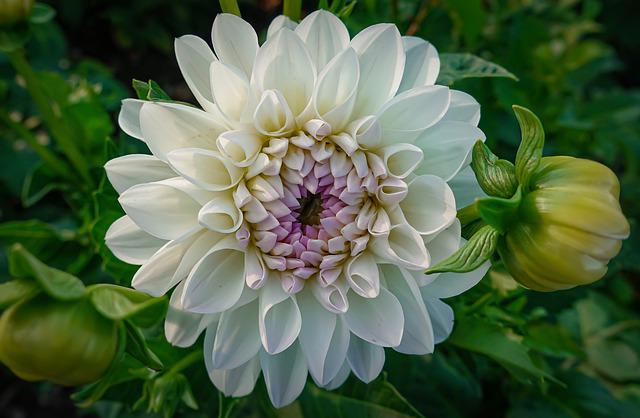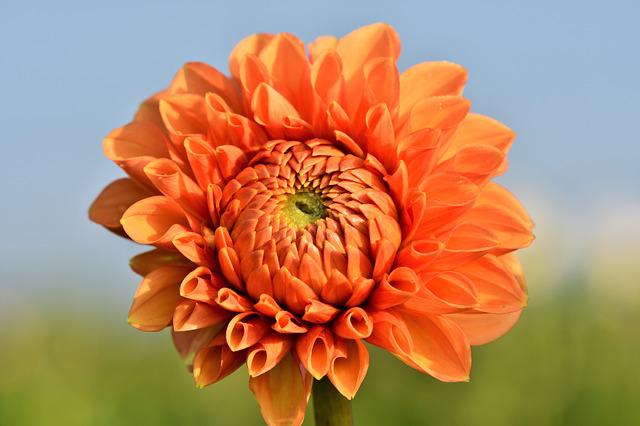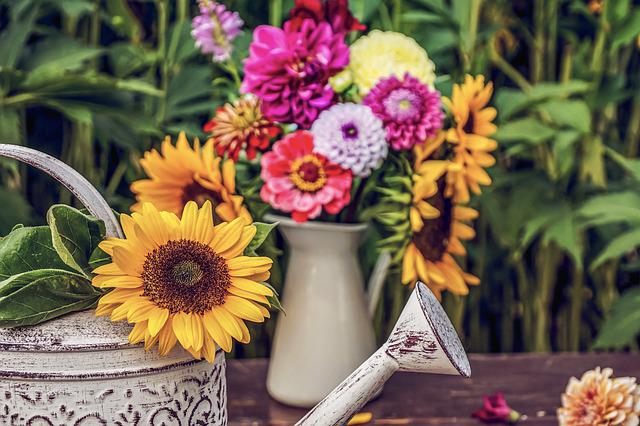Can Dahlia Survive Winter? Overwintering Dahlia in Cold Climates

Dahlia tubers can withstand one or two frosts if the ground is still warm. If dahlia tubers spent multiple nights outdoors in temperatures between -4 and -10°C, it can be a concern. Dahlia tubers that have been frozen are dead, to put it briefly. Exercise caution and use your best judgment. Dahlias are a tough plant, capable of withstanding cold weather and long periods of drought. That said, some dahlias do better in winter than others. Check out on how to overwinter your dahlia in cold climates and make sure they have a chance to rebound in the spring!
Table of Contents
Strategies for Overwintering Dahlias
Although dahlias are native to warm regions like Central America and Mexico, gardeners can overwinter these plants in a variety of ways in colder regions. Your method of choice will depend on the state of your garden, the climate, and the materials you have available.
Identify the Plants
It can be challenging to distinguish between different dahlias after the foliage dies. To prevent confusion, give them labels ahead of time. If you live in a temperate area where the winter temperature averages below 32°F (0°C), most dahlias will overwinter well with little care. Just be sure to water them sparingly once the ground freezes and cover them with mulch or straw for insulation. Use caution when digging around your dahlia plants as they may root down deeply into the earth during freezing temperatures.
Trim Back the Plants After the First Frost
While the tubers are unaffected by the first frost, the foliage will die. Reduce the length of the stems to 2-4 inches. Snip off the lower leaves to about 1 inch above the tuber. Then, before the first freeze of winter, cover the plants with a layer of straw or mulch.
Leave the Dahlias in your garden
If you live in a warm region and want to overwinter your dahlias, leave them in the garden. Shelter them from cold weather with mulch or plastic sheeting, and water regularly. Dahlias will flower when they first start to freeze but will stop blooming as temperatures continue to decline.
If your soil is well-drained and you have space for the extra plants, try growing dahlia tubers in containers. Place small pots (4–6 inches deep) filled with potting soil near a south or west-facing window that gets morning sun.
Bring Indoors Dahlias to Pots
When the growing season is over, simply bring your dahlias indoors to overwinter them if they are already potted. Wait until the first frost has passed before doing this. The plants will go into dormancy as a result of this cold. After that, reduce them to a height roughly equivalent to the soil. Move them inside to a cool, dry, dark place before winter arrives fully. A basement or garage will do, as long as the tubers don’t freeze.
Collect the Dahlia Tubers
Digging up dahlia tubers and storing them indoors is the most common method of preserving dahlias for the winter in colder climates. You should hold off until after the plant has gone into dormancy as a result of the first frost. Cut them back to a height of a few inches above the soil, and then after about ten days, carefully dig up the tubers with a garden fork or a spade, keeping at least a foot of space between your digging and the stem to protect the tubers’ delicate roots. After the tubers have been dug, carefully brush the extra dirt off of them as you lift them out of the ground. You will be overwintering the largest, healthiest-appearing tubers, so clean and shape them. With twine, dangle them upside-down.

Brush Away Excess Soil and Examine Tubers
Brush off excess soil with your hands rather than using water to clean the tubers. The tubers should be firm and smooth on the outside. Remove any tubers that have severe damage or appear to be rotting. After examining the tubers, fill up any pot with fresh potting soil and repot them into their new containers. Dahlias may rot if they are overwintered in damp conditions. Cut the stems to 1-2 inches in length now.
Allow Time To Dry
Bring the tubers indoors for a few days. Allow them to dry in a location away from direct sunlight.
Store in a Cool, Dry Place
Once the tubers are dry, store them indoors in a cool, dry place. A basement or garage will do fine as long as the tubers don’t freeze. Throughout the winter, keep the tubers at 45-55°F. Overwintering is usually best done in a cellar or garage.
Check for Rot
Throughout the winter, inspect your tubers and remove any that are rotten. A rotten tuber will change color, be completely dried out, have a foul odor, or be covered in mold. Tubers can dry out while remaining viable. If the skin is shriveled but the rest of the body appears healthy, simply mist lightly with water.
Plant Winter-Stored Dahlias in the Spring
The tubers can be moved back outside for the growing season after the final frost in the spring.

